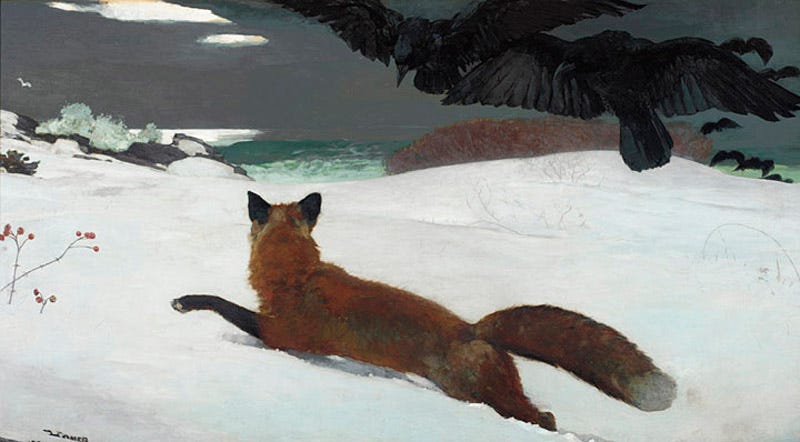FOX
Foxes are legendary for their incomparable astuteness, they have been seen erasing its tracks on the snow with their tails. Foxes embody the elusive and transforming qualities of fire. For the Incas, they were able to listen to distant secrets and to guide the visions of the shamans. In many cultures they are linked to demonic possessions. In the Middle Ages, the fox used to appear as an image of the devil. For the Siberian peoples, the black fox was the messenger that led to the underworld. In China and Japan, the fox is the most subtle of all animals and it is considered a kami, a strange spiritual energy similar to thunder and dragoons. In addition, the fox is closely associated with the Shinto god Inari, deity of fertility, agriculture, and rice. Chinese ancestral knowledge considers the fox as a sort of second consciousness, capable of foreseeing the future. In Japanese mythology, foxes (kitsune) are intelligent animals with magical abilities. The power of a kitsune increases with age as new tails grow: the fox of nine tails is the most powerful. Among its most prominent powers is the ability to adopt the human form, usually with the look of a young woman. Kitsune use their metamorphosis power as a trickster and also usually adopts the role of a faithful guardian. For analytical psychology, the fox is a symbol of the opening of the unconscious realm: a serene consciousness is needed to establish a reciprocal balanced relation with the instinctive forces of transpersonal memory.
“In Jung's language, psychotherapy achieves its ultimate goal in the wholeness of the conjunction, in the bisexuality of consciousness, which means, as well, conscious bisexuality, that incarnation of durable weakness and unheroic strength that we find in the image of Dionysus. Bisexual consciousness here means also the experience of psyche in all matter, the fantasy in everything literal, and the literal, too, as fantasy; it means a world undivided into spirit and matter, imaginal and real, body and consciousness, mad and sane. As Jung pointed out, the dogma of the Assumption of Maria ends the repudiation of femininity. It signifies consciousness of bisexuality in the God-image.”
The Myth of Analysis by James Hillman
GUINEU
L'astúcia de la guineu és llegendària, se l'ha vist esborrar les seves petjades sobre la neu amb la cua. Encarna les qualitats esquives i transformadores del foc. Pels inques era capaç d'escoltar secrets llunyans i guiar les visions dels xamans. En multitud de cultures va lligada a les possessions demoníaques. A l’Edat Mitjana, la guineu solia aparèixer com una imatge del diable. Pels pobles siberians, la guineu negra era l’astut missatger que conduïa a l’inframón. A Xina i Japó, la guineu és la més subtil de totes les bèsties i se la considerada un kami, una estranya força espiritual similar al tro i als dragons. A més, la guineu està estretament associada al déu xintoista Inari, divinitat de la fertilitat, l'agricultura i l'arròs. El saber ancestral xinès considera la guineu com una espècie de segona consciència, capaç de preveure el futur. A la mitologia japonesa, les guineus (kitsune) són animals intel·ligents que tenen habilitats màgiques. El poder d'un kitsune augmenta amb l’edat mentre li van creixent noves cues: la guineu de nou cues és la més poderosa. Entre els seus poders més destacats es troba la capacitat d'adoptar la forma humana, habitualment amb l’aspecte d’una dona jove. Els kitsune utilitzen el seu poder de metamorfosi per fer entremaliadures i també solen fer la funció de guardià fidel. Per la psicologia analítica, la guineu és un símbol de l’obertura de les portes de l’inconscient: fa falta una consciència serena per poder establir una relació d’equilibri recíproc amb les forces instintives de la memòria transpersonal.
“En el llenguatge de Jung, la psicoteràpia aconsegueix el seu objectiu últim en la totalitat de la conjunció, en la bisexualitat de la consciència, que significa, també, una bisexualitat conscient, una encarnació d’una debilitat resistent i d’una força no heroica que trobem en la imatge de Dionís. Tenir consciència bisexual també significa, en aquest context, portar l'experiència de la psique a tota la matèria, exercir la fantasia en tot allò literal i veure allò literal, a la vegada, com a fantasia. La consciència bisexual significa un món no dividit en esperit i matèria, en imaginal i real, en cos i consciència, en boig i sa. Com va assenyalar Jung, el dogma de l'Assumpció de Maria acaba amb el rebuig de la feminitat. Significa la consciència de la bisexualitat en la imatge de Déu”.
El mito del análisi de James Hillman












